in Phoenix & Chandler, AZ
Breast reconstruction surgery is a surgical procedure to recreate the breasts after a mastectomy procedure has removed one or both of them.
At Elite Plastic Surgery, we understand the difficulties that can arise when you are notified of a breast cancer diagnosis or a genetic predisposition to developing breast cancer. There are multiple new stressors, physically and emotionally.
Meeting multiple physicians and healthcare professionals while trying to understand an overabundance of new information can be overwhelming.
We strive to provide a service in this time of uncertainty to ease your burden and improve your experience. As your reconstructive team, we’ll take the task of returning your self-identity and pride seriously, bridging the gap from cancer treatment to the phase of true recovery and a return to normalcy. This is not only your battle but a journey that you will be able to share with fulfillment. To learn more, reach out to Elite Plastic Surgery at our Phoenix or Chandler locations and set up your consultation with a member of our team today.
We focus on the individual and utilize our knowledge and experience with all available reconstructive procedures to customize our treatment plan for each patient. We are not only experienced with performing the most complex breast reconstruction procedures, but we have also published numerous peer-reviewed journal articles to better understand and advance breast reconstruction. Our published peer-reviewed articles have covered multiple aspects of breast surgery, including:
We also believe that the most informed patients are the most satisfied with their reconstructive results. This is due to the shared decision-making between patients and physicians, which allows for the most ideal outcomes.
Advancements in breast reconstruction have coincided with breast oncological (cancer) care advancements. The goals of oncological care are to remove cancer, prolong life, and decrease recurrence. Before modern research and advancements in surgical and medical care, more drastic procedures were believed to be required to “cure” a patient of cancer. As we have better understood and managed breast cancer, we have transitioned to less invasive methods while achieving the same goals. Radical mastectomies involve the removal of breast tissue, overlying skin, and subcutaneous tissue, underlying chest muscle, and lymph nodes. There has been a gradual yet significant change in this approach, where qualified patients are offered procedures such as skin or nipple-sparing mastectomies. These options can be discussed with your breast oncologic surgeons. This has allowed reconstructive breast surgeons to offer options to better match a natural result.
Meanwhile, breast reconstruction has also evolved. Pedicled muscle flaps (local muscle flaps with overlying skin and soft tissue), such as latissimus dorsi and rectus abdominus flaps, have helped provide natural options earlier in the evolution of breast reconstruction. A better understanding of skin and soft tissue anatomy combined with progressive surgical techniques, including microsurgical procedures, has introduced perforator-based free flap options as a completely natural and reliable option for breast reconstruction using your own tissue.
Perforator-based free flap options offer reconstructive options using your own tissue while minimizing the risks to the donor site (the site where tissue is taken from). The donor sites can also improve the body contouring of the site from which they are taken. Breast implants and surgical approaches have also improved in terms of their safety and reconstructive results. In addition to these advancements, fat grafting techniques have been well described and serve as a reliable option to improve outcomes in conjunction with other techniques.
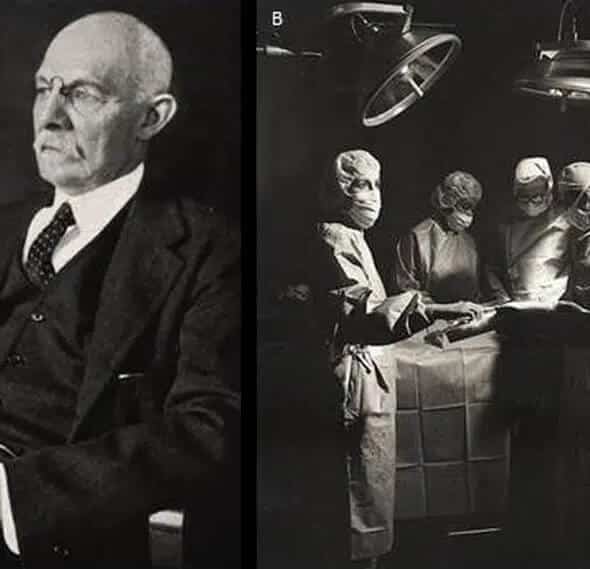
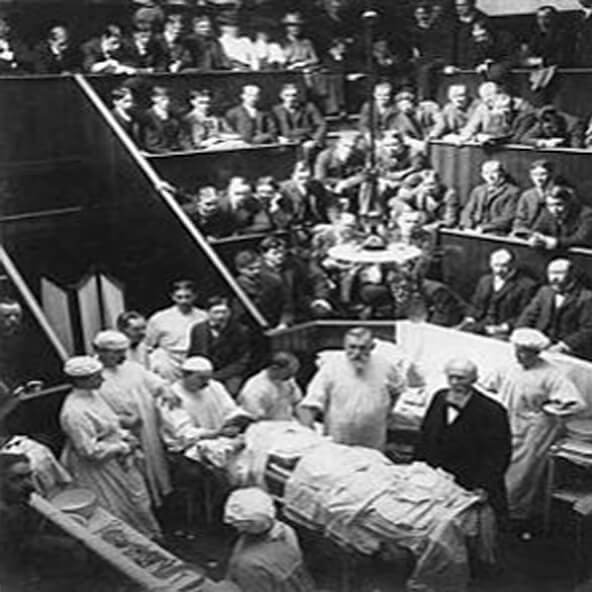
The type of breast reconstruction that is ideal for you will depend on your condition and surgical goals. Generally, the surgical goals are centered around the return to normalcy and restoration of your self-identity by providing an ideal type of reconstruction for you. The breast mound, or breast size, will differ according to your body type and your desired shape and size. This is based on your comfort and safety of the desired procedure. Your ideal breast shape and position will be based on the dimensions and measurements of the different aspects of a natural breast. This includes:
In addition to the reconstructed breast’s size, shape, and position, an important consideration for the reconstructed breast is the feel. Creating the nipple and areola is the last surgical step of breast reconstruction if you choose to do it. However, not all women can have nipple reconstruction surgery. So you should talk openly to our doctors during the consultation about your surgical and cosmetic goals. Whether you want to learn more about your treatment options and their advantages and potential side effects, our plastic surgeons are here to help.
Instruments for breast reconstruction can vary depending on the type of surgery. Our instruments for breast reconstruction allow us to provide a customized feel of the reconstructed breast. In brief, “free flap” or autologous reconstruction can provide a natural feel by utilizing your own tissue. Another approach to breast reconstruction is inserting implants filled with saline or silicone gel.
Modern breast implants come in various consistencies, which allows us to provide a spectrum of options for individualized breast reconstruction. Fat grafting can be utilized with breast implants for a more natural feel of the tissue overlying implants. At Elite Plastic Surgery, we will discuss all the options so we can customize our approach and optimize the breast mound, position, shape, and feel to your ideal breast reconstruction results.
The overall goals of breast reconstruction revolve around your expectations, a return to normalcy, and the ultimate restoration of your self-identity. An open discussion of your expectations combined with our surgeon’s expectations is a very informative step. This will be reviewed during your consultation.
You are unique, and although some people look similar or have comparable body types, there will always be small differences. This is why we will customize our approach for you.
In this section, we will discuss the different reconstructive tools we use and provide a brief description of how they are used. We’ll also discuss some advantages and disadvantages in this section. A full discussion of the risks and advantages of your approach will be discussed with you during the consultation.
These are usually considered “placeholders” in the mastectomy pocket. Fluid or air can be added or removed from these implants. This allows for gradual expansion of the mastectomy flaps (the remaining skin and tissue overlying the removed breast) when an additional area is needed to fit the proper implant or flap.
Expanders are also useful in deciding what size is appropriate for each person since they are adjustable in terms of the amount of fluid they can hold. The disadvantages of tissue expanders are that although they are safe, they are a foreign body and are temporary. Expanders need to be replaced with permanent implants or flaps. Also, radiated tissue is difficult to expand.
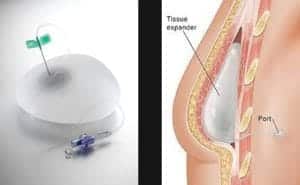
Breast implants come in different sizes and cohesiveness. The sizes help match the breast footprint (where the breast gland sits), volume, and projection. The cohesiveness of the implant describes its firmness. New-generation implants offer various options. Disadvantages include the possible need for implant removal due to exposure or infection and the potential for capsular contracture.
All foreign bodies, even surgical-grade ones, cause a response by the human body, which forms a capsule that can then become tight or painful (a condition called capsular contracture). Newer techniques and implants have decreased the rates of these complications. However, this is an inherent risk to any implant-based reconstruction. Again, because implants are foreign bodies, complication rates increase with radiation.
Biological mesh can be placed within the mastectomy pocket to support implants like a sling or wrap. These biological mesh products are incorporated into the body.
Research has demonstrated a decrease in capsular contracture rates, though a disadvantage is increased serous drainage and seroma rates.
Most pedicled flaps classically utilized in breast reconstruction are the latissimus dorsi (from the back) or rectus abdominus (from the abdomen). A flap is a tissue preserved in its blood supply. In pedicled flaps, the blood supply is not disrupted and reestablished. The disadvantage of the commonly used pedicled flaps is related to the donor site when rectus abdominus is used, and partial flap loss occurs. The disadvantages of the latissimus dorsi flap are mild weakness in arm flexion (or downward force). This flap generally does not have ample tissue to recreate an adequate breast mound.
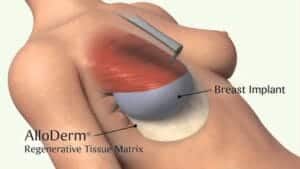
The advancements in our understanding of anatomy combined with surgical expertise have allowed us to improve the field of autologous breast reconstruction by using perforator-based free flaps. Free flaps are tissue sections taken from the body that have preserved blood supply. However, contrary to pedicled flaps, the blood supply is disconnected at its source and reconnected to vessels in the chest using microsurgical techniques. This allows the free transportation of tissue from one part to a distant part of the body.
We describe the perforator flap options below; however, we will briefly describe the deep inferior epigastric artery perforator (DIEP) flap in this area. The DIEP is the most popular option for perforator-based free flaps due to breast size and shape similarities.
This is similar to the tissue used in the rectus abdominus pedicled flap. However, studies have shown that the dominant blood supply to this tissue comes from an inferior source (iliac vessels). In contrast, the pedicled flap is based on superior vessels. This is also similar to the tissue removed in an abdominoplasty (tummy tuck).
By freely transporting tissue on its main blood supply, autologous reconstruction results have decreased donor site morbidity. The goal is to preserve the underlying muscle that the perforator vessels travel through. Disadvantages of free flap breast reconstruction include the donor site risks, length of procedure, and availability of microsurgical team and capability.
Fat can be attained and simply injected into different parts of the body. The fat is attained using liposuction techniques and injected using a fine syringe, allowing for regular transport of natural tissue without the long operative times needed for free flap reconstruction. However, there are limitations. The amount of fat that can reliably be transported is less than free flaps, in general. Sometimes, patients can require multiple stages of fat grafting to attain adequate results. Fat grafting does allow for finer control of small areas that may require correction or adjustments.
All tools discussed can be used on contralateral (opposite) sides to provide symmetry when only one-sided surgery (unilateral) is recommended. This includes but is not limited to placing implants, performing lifts or reductions, or using fat grafting techniques.
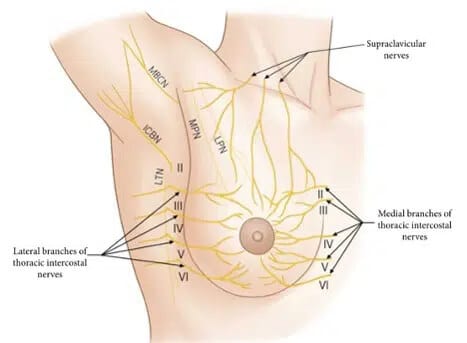
The breast is a specialized gland in the soft tissue. Breasts serve to provide lactation for offspring. The overlying skin and nipple-areolar complex have a well-described blood supply and nerve supply (sensation of the area).
The breast receives most of the blood supply from medial sources and a contribution from lateral and superior sources. This provides nutrition to the tissue and a simplified guideline for blood supply that can be used in microsurgical breast reconstruction.
The medial source is the internal mammary artery (IMA) which runs on the deep side of the ribs, usually just on the sides of the sternum. In our practice, when performing free flaps, we usually perform an anastomosis (connection) to these vessels due to their reliable blood flow and size.
The lateral thoracic and thoracoacromial vessels provide smaller contributions of blood supply to the breast and are reserved for special circumstances.
The thoracodorsal vessel is another vessel in the area that can be used for anastomosis. The thoracodorsal vessels provide blood supply to the latissimus dorsi muscle. These vessels are reserved as a “backup” option to preserve the latissimus dorsi muscle flap as a “lifeboat” for failed breast reconstruction.
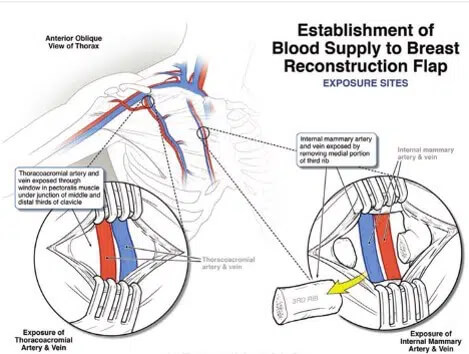
Breast sensation is supplied by medial and lateral intercostal nerves. During mastectomies, the nerve supply is often disrupted.
This is due to the location of the sensory nerve course near or through breast tissue that needs to be resected to provide a safe oncological procedure. This can result in numbness of the overlying breast skin and/or Nipple-Areolar Complex (NAC) preserved.
The skin and soft tissue in your body are supplied by small vessels called perforators. Perforator vessels generally branch off of a source vessel before penetrating through the fascia and/or muscle to provide blood supply to the soft tissue. Perforator locations and sizes vary from person to person, but there are well-described locations.
Each perforator feeds an island of skin and soft tissue superficial to the deep fascia. This has allowed the description and use of various perforator-free flaps (see below). The free flaps can also include sensory nerves, which can be preserved and connected to nerves in the chest to provide sensation.
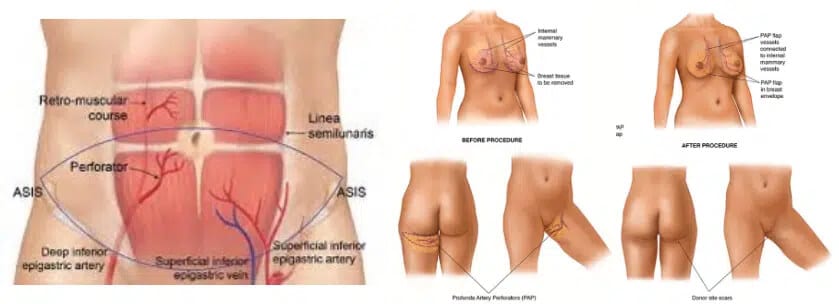
Breast reconstruction often forms the final step in your journey to recovery after a breast cancer diagnosis. As such, we understand that the process can be a highly sensitive one. Our team has earned a reputation for excellence and is known for its commitment to the most advanced breast reconstruction techniques available. To learn more about how Elite Plastic Surgery can help you along your breast reconstruction journey, reach out to our Chandler or Phoenix offices and schedule your consultation with a team member today.